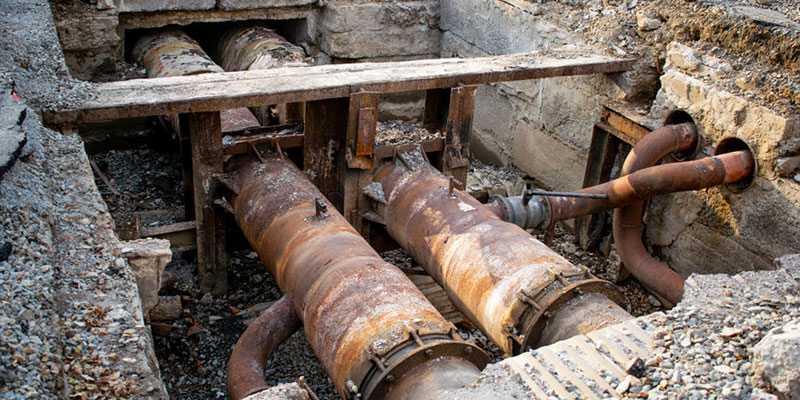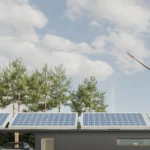Water efficiency has become an increasingly important focus in modern society, with cities, businesses, and households seeking ways to reduce consumption and preserve resources. Governments and environmental agencies have introduced strict standards that encourage responsible use, but many communities face an obstacle hidden below the surface—aging pipes. These outdated systems, often decades old, undermine efficiency efforts by leaking water before it ever reaches taps. While visible leaks inside buildings are frustrating, the unseen losses from deteriorating pipelines are far more damaging in terms of waste and long-term costs. Addressing water efficiency requires more than upgrading appliances or promoting conservation habits; it involves evaluating the condition of the infrastructure itself. When pipes fail to deliver water effectively, even the most advanced conservation measures lose their impact. Understanding the role aging pipes play in efficiency challenges is vital for ensuring that modern standards translate into tangible results for both people and the environment.
The hidden challenge beneath infrastructure
- Leaks and water loss from old infrastructure
One of the most immediate effects of aging pipes is the sheer volume of water wasted through leaks. Small cracks, corrosion, and joint failures allow treated water to escape before it reaches consumers, undermining efficiency at every stage of the supply chain. Municipal systems with outdated infrastructure often report staggering losses, with some cities losing a quarter or more of their treated water through distribution alone. This waste not only impacts efficiency but also raises costs, as utilities must process additional water to meet demand, driving up expenses for customers. For households, hidden leaks inside walls or under floors caused by deteriorating pipes can go undetected for months, increasing bills and wasting thousands of gallons. The problem is compounded by the fact that much of the lost water has already been treated and pumped, resulting in significant energy and resource waste. Companies like Reliable Water Mitigation stress the importance of early detection and repair, as timely action prevents escalating costs and improves alignment with efficiency standards.
- Corrosion, contamination, and inefficiency
Beyond water loss, corrosion in old pipes creates additional problems that undermine efficiency. When pipes deteriorate, minerals and metals leach into the water supply, sometimes requiring additional treatment before the water is safe to use. Contamination reduces efficiency in two ways: first, it increases the need for energy-intensive treatment, and second, it discourages consumer trust, leading many to rely on bottled water instead of municipal supplies. This shift increases overall resource consumption, from plastic production to transportation, further negating efficiency gains. Corroded pipes also restrict water flow, reducing pressure and forcing pumps to work harder to deliver adequate service. This strain increases energy use throughout the system and reduces the lifespan of equipment. The dual challenge of contamination and restricted flow underscores how aging pipes create inefficiencies that extend beyond simple leaks, affecting both the quality of water delivered and the energy required to transport it. As infrastructure continues to age, these issues will worsen unless addressed proactively.
- Strain on meeting modern efficiency standards
Modern water efficiency standards are designed with the expectation that infrastructure can deliver consistent, reliable results. Aging pipes make compliance with these standards far more difficult. Utilities and municipalities are often forced to invest heavily in monitoring and maintenance just to maintain baseline performance, leaving fewer resources available for innovation or expansion. This creates a cycle where outdated systems drain budgets while preventing meaningful upgrades that could improve overall efficiency. For households, compliance with efficiency goals—such as using low-flow fixtures or water-saving appliances—can be undercut if delivery systems are already wasting significant volumes before reaching their property. Businesses also face challenges, as inconsistent supply and pressure from deteriorating pipes interfere with operations and drive up costs. The inability to meet modern expectations not only wastes resources but also undermines public trust in water management systems. Without addressing the issue of aging infrastructure, efficiency targets risk remaining theoretical rather than practical achievements.
- Long-term economic and environmental consequences
The long-term consequences of aging pipes extend well beyond inefficiency, shaping both economic and environmental outcomes. Financially, water utilities spend billions each year repairing leaks and replacing failed sections of pipelines, costs that are often passed on to consumers. For individuals and businesses, this results in higher water bills despite ongoing conservation efforts. Environmentally, the wasted water strains already limited freshwater supplies and increases the energy required for pumping and treatment. The additional carbon emissions associated with wasted energy use further compound the environmental burden. These outcomes underscore that outdated infrastructure is not only a technical issue but also a pressing sustainability concern. Investing in modernizing pipelines supports water efficiency goals, reduces waste, and protects resources for future generations. Without such investment, cities and households will continue to bear the financial and environmental costs of systems that no longer meet modern needs. Aging pipes, therefore, represent a hidden but critical barrier to sustainable water management.
Read More: https://acubi.us/solar-power/
Aging pipes remain one of the most significant obstacles to achieving meaningful progress in modern water efficiency standards. Their tendency to leak, corrode, and waste treated resources undermines conservation efforts, increasing costs across households, businesses, and municipalities. These hidden problems create inefficiencies that extend beyond water loss, affecting energy use, environmental quality, and public confidence in the supply system. Addressing the challenge requires investment in infrastructure, early detection of leaks, and a commitment to long-term sustainability. By replacing or repairing outdated systems, communities can reduce waste, align with modern standards, and secure more reliable access to clean water. The economic and environmental benefits of tackling this issue far outweigh the costs, ensuring that future generations inherit systems capable of supporting both growth and sustainability. Without addressing the aging infrastructure beneath our feet, even the most ambitious conservation efforts will struggle to succeed. Updating these systems is crucial for achieving efficiency goals.



